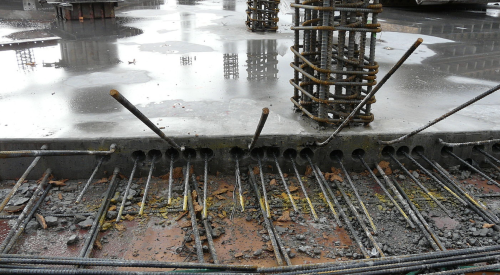Lifestyle: it's a buzzword tossed around among home builders and developers to promote their housing communities, whether they're targeting growing families or active adults. It's not surprising considering lifestyle communities have proven to be quite popular with these target markets.
Creating a lifestyle environment typically calls for substantial amenities: clubhouses, pools, tennis courts, workout facilities, walking trails and other perks an imaginative builder includes. It also calls for a self-sustaining community. After all, someone will need to be in charge of taking care of all those fine and fancy amenities after the builder has packed up his tools and moved on to the next project.
A builder's reputation, and possibly even the entire company, is at risk if it does not properly set up the reserves, governance documents and other essentials for the community association.
When these types of communities are created, it's the builder's or developer's responsibility to establish the association that will manage and maintain the community's common elements.
 |
 |
| Amenities found at Town & Country Homes' Churchill Club community include a swimming pool just behind a private 8,400-square-foot clubhouse. The builder recently turned association control over to homeowners, who will now manage the community property. |
"The transition process can be fraught with miscommunication and misunderstanding, not to mention acrimony and even costly litigation," says attorney Ronald L. Perl, former president of the Community Association Institute Research Foundation.
There are nearly 300,000 association-governed communities in place today throughout the United States, but the learning curve remains, says one expert.
"Considering the evolution of community associations throughout the United States and the explosion in the use of this type of residential ownership over the past 15 years, it may seem hard to believe that we are still deeply imbedded in the learning curve of how to plan, build and turn over these types of communities to the new homeowners with minimal confrontation and subsequent litigation," writes Mitchell H. Frumkin, president of engineering consulting firm Kipcon, in a white paper prepared for a 2008 International Builders' Show presentation titled "Removing the Risks in Developing a Community Association."
Frumkin also observes in his white paper that builders' and developers' efforts over the past five years for a more proactive approach to the transition process have been able to minimize the risks commonly associated with these self-sustaining communities.
Ray Blankenship, area vice president for K. Hovnanian-owned Town & Country Homes, says that some of the pitfalls between builder and association can be related to governing documents, including rules, bylaws and declarations and — perhaps even more so — money.
"As a builder, you want to keep the association dues as low as possible to help your sales effort, but if you go too low, you leave the homeowners with little to no reserves and possibly a deficit once you turn it over to them," Blankenship points out.
 |
In his white paper, Frumkin names the three most common risks in dealing with community association: deficient construction, inadequate budgeting and inaccurate governing documents — almost an exact echo of what those out in the field say.
A set-up for successFrumkin says risk management techniques can minimize confrontation with new homeowners. The first step, he says, is establishing a risk management plan that addresses the risk areas throughout the entire process.
Builders and developers looking to be proactive in the creation of lifestyle communities have help. In 2004, The CAI Research Foundation, in partnership with NAHB, released a "Developer to Homeowner Best Practices Report."
The free report, which can be downloaded from the CAI Research Foundation or NAHB Web sites, provides guidelines and case studies designed to help communities transition from builder to community association control. Topics covered include transition issues such as construction, governance, document preparation, communications, maintenance of common property, financial control, budgets, litigation, engineering reports and insurance.
"We worked with our partners to develop a resource that can help builders and homeowners avoid some of the most common mistakes," Pearl points out.
Smart builders might want to tap into these resources. And they can make themselves look real good in the eyes of any new homeowner board if they also make those individuals aware of best practices resources.
|













